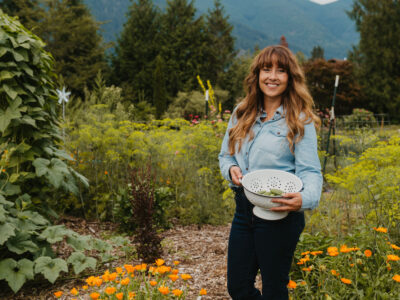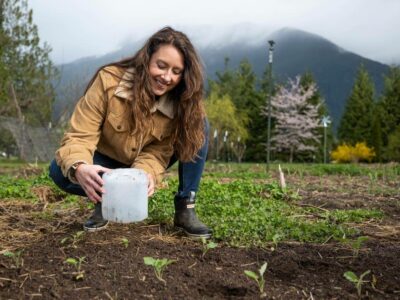If you’re looking to get a farm dog, you may be wondering which farm dog breeds are best. This can vary based on many factors, from your needs, your property and your time commitment to training the dog. Listen to or read below this podcast interview with Jordyn Kelly from Working Aussies Homestead.
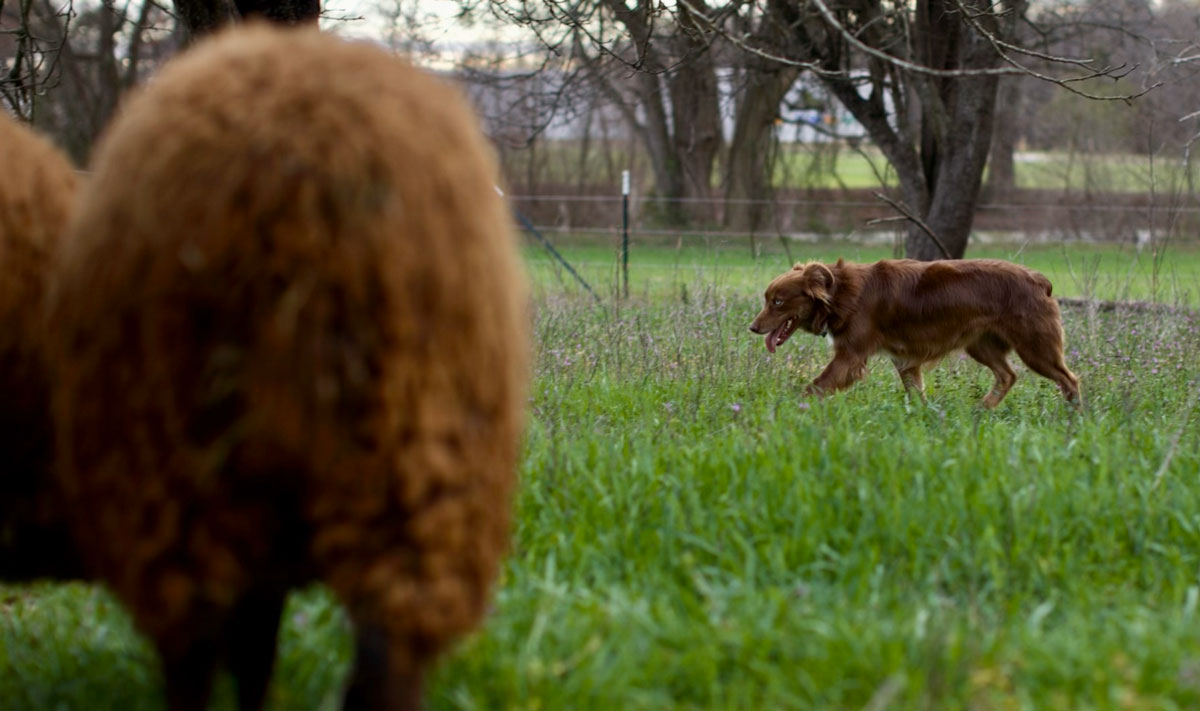
Are you raising livestock for a year’s worth of meat? Maybe you’re raising grass-fed beef cattle, raising goats, or maybe even raising sheep for fiber. If so, chances are you’ve considered getting a farm dog. If this sounds familiar, this podcast episode is for you!
Watch my interview with Jordyn Kelly below, or listen to the Pioneering Today podcast (episode #467) at the top of this post.
We talk about many things here, from raising egg-laying chickens and raising meat chickens to using herbal remedies for animals and growing your own livestock feed. It’s my goal to share a wide range of knowledge and skillsets to reach everyone where they are on their homestead journey.
When we’re discussing a topic I haven’t mastered yet, I seek out the experts and bring them onto the podcast to share their knowledge with us.
About Jordyn
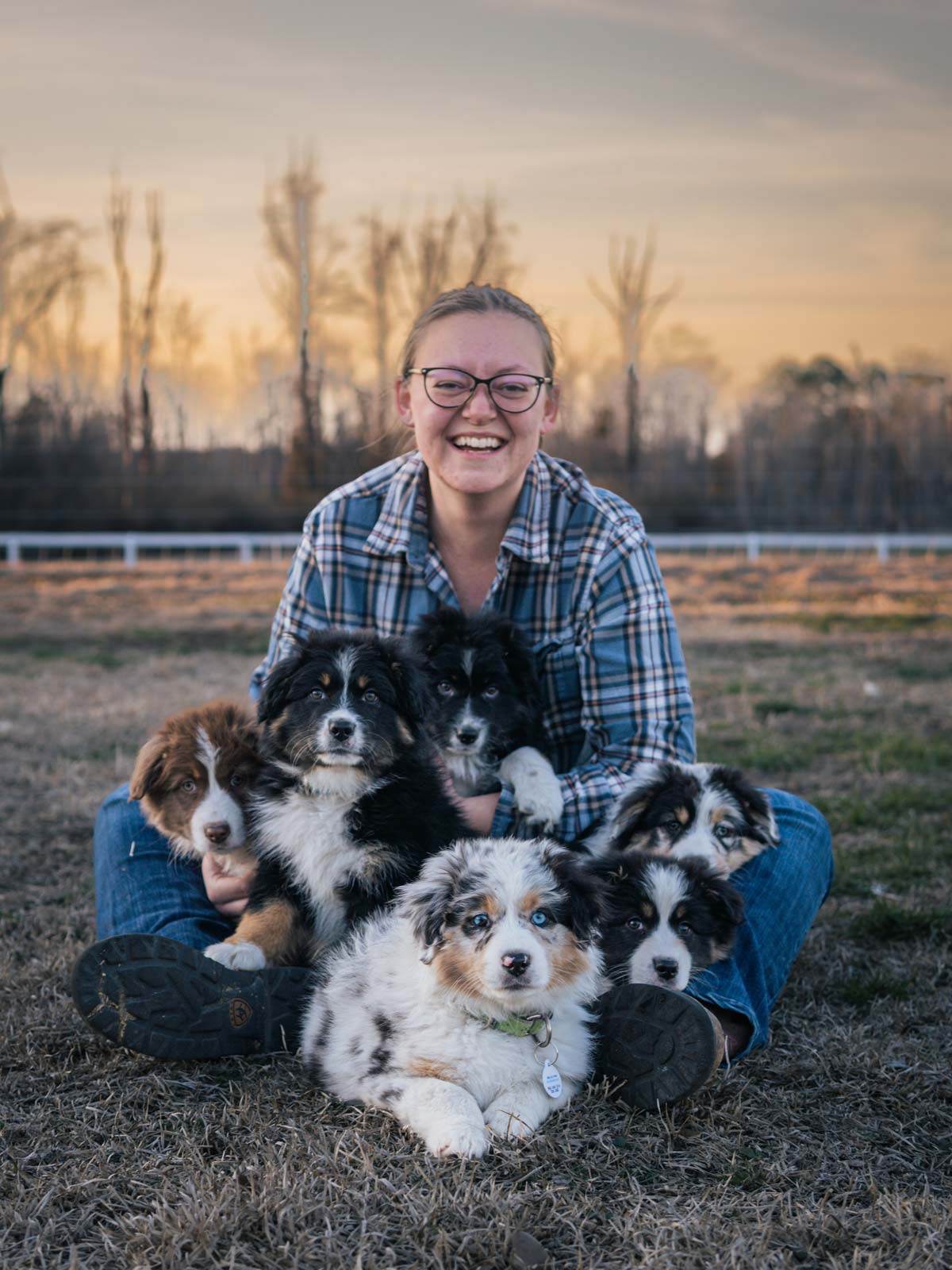
As a Colorado native, Jordyn Kelly grew up loving nature and animals, but dogs were always her favorite. As a young girl, she dreamed of becoming a vet. Though that dream was never realized, it’s no surprise that she’s become an expert on herding dogs.
As she and her family have grown their business and homestead, she relishes the opportunity to share herding demonstrations and be a point of contact for any questions related to having dogs.
From nutrition to training to troubleshooting problem behaviors and getting started in herding, she’s done the research and the work to be a reliable source on all things dogs.
Livestock Guardian Dogs vs Herding Dogs
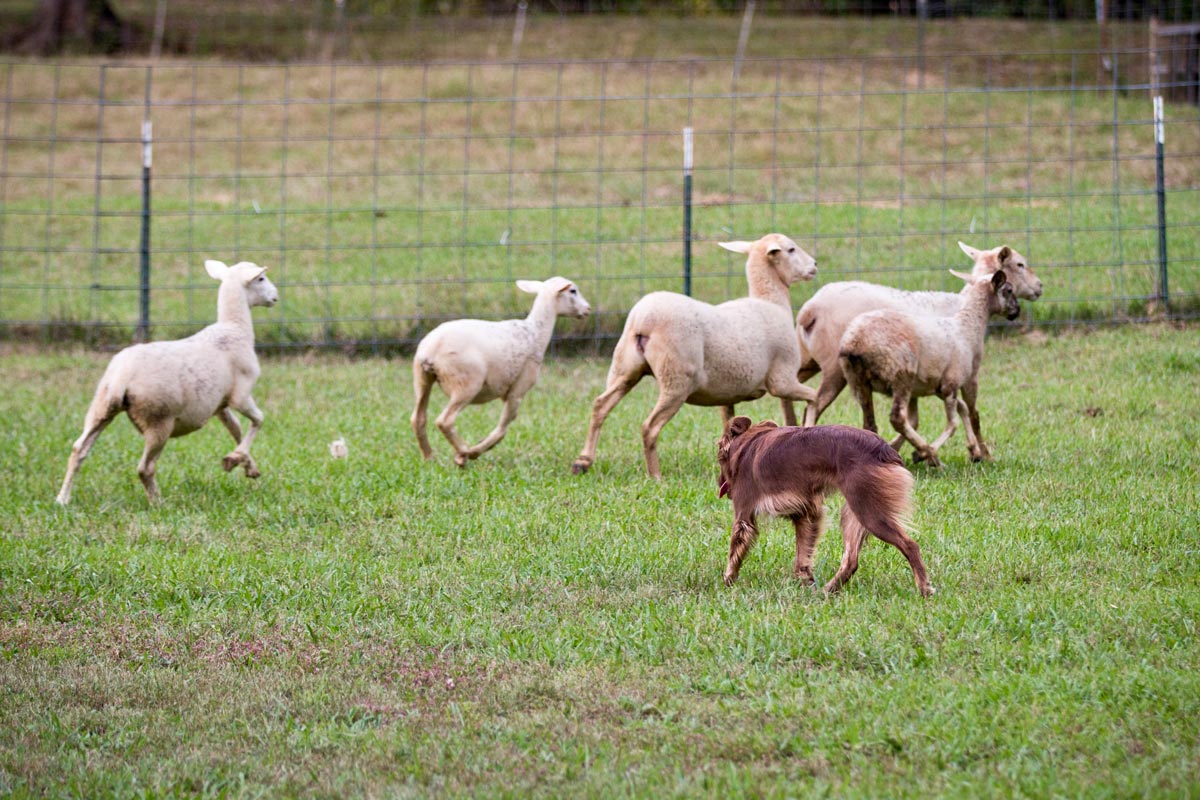
Have you ever wondered the difference between a livestock guardian dog and a herding dog? You’re not alone! Jordyn demystifies the differences for us with a very simple explanation:
- Herding dogs are there to control the chaos; they’re not there to create it. They’re meant to partner with the farmer or rancher and move the livestock in a timely and efficient manner. Essentially, it’s their job to make the farmer/rancher’s job easier.
- Livestock guardian dogs are there to protect and blend in with the livestock. Acting as protection against predators or to alert the farmer/rancher if there’s a problem.
Depending on your setup, there may be a situation in which someone wants both a livestock guardian dog and a herding dog.
How to Find a Herding Dog

Jordyn recommends that the first thing you do is join the Australian Shepherd Club of America. This is the only club for Australian Shepherds that DNA tests the dogs for a purebred dog.
On this website, you can go and look at their “Hall of Fame Breeders” section. These are breeders who have put in the legwork to ensure their dogs are proven in any and all venues to be good, sound, working dogs.
Research the Hall of Fame breeders by finding videos of those dogs working, and then start narrowing down which pedigree of a working dog is best for you.
What to Consider When Choosing a Herding Dog
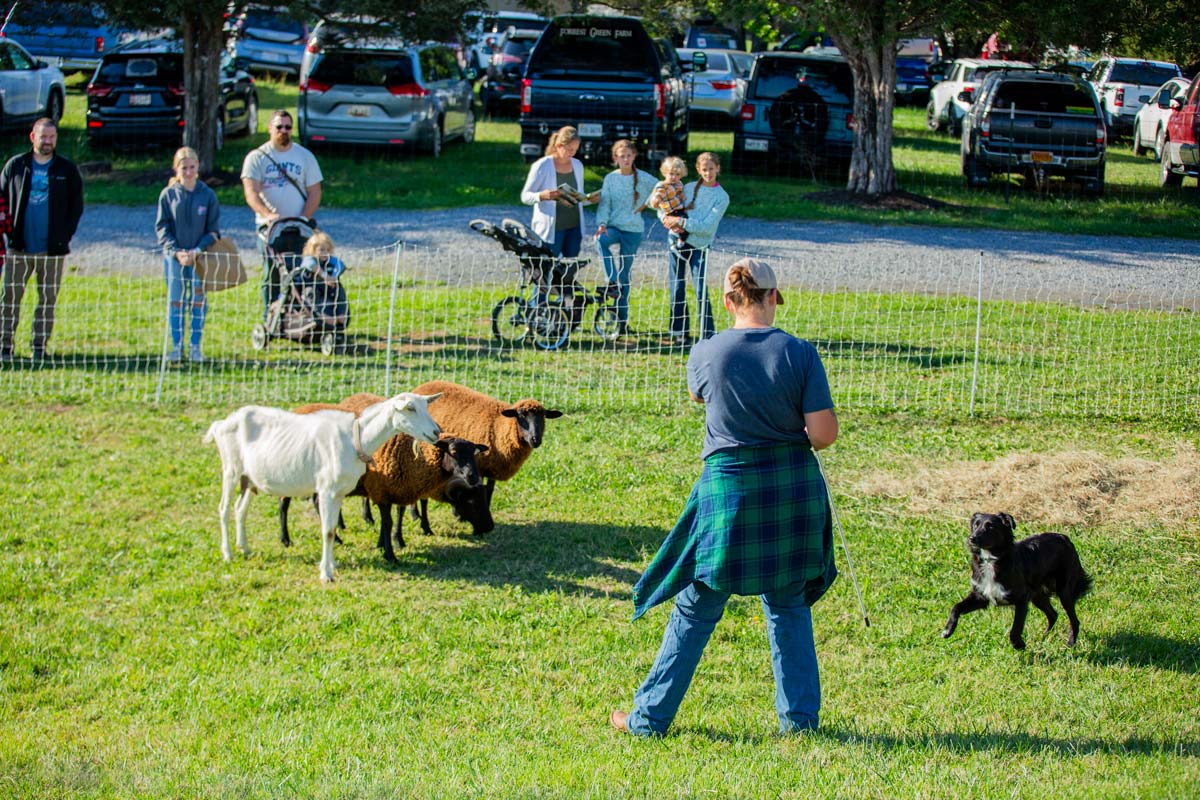
Jordyn makes a great point about different dogs in that their instincts have been bred into them. That’s why there are so many great livestock guardian dog breeds or herding dog breeds, and it’s not a one-size-fits-all.
There are 30 breeds recognized in the herding group of dogs. Things to consider when choosing your breed are:
- Climate – Different dogs will do better in different climates. Consider your climate before choosing your breed, and get to know which breeds will do best where you live. For example, an Australian Kelpie is bred to go long periods of time without water, making it great for drier more arid climates (like Australia).
- Type of Livestock – Though ideally, your herding dog should be able to work with multiple kinds of livestock, there are breeds that have been specifically bred for different livestock.
- Your Lifestyle – Take into consideration your lifestyle. How active and agile are you to work with your livestock? Do you need the dog to “do it all” or are they more of a helper for the areas you can’t cover? This will determine which kind of breed to look for.
- What your property is like – Some herding breeds do better on a larger property while others do best on a smaller property. Consider your needs before settling on a breed.
- What are your needs? – It’s important to consider what your needs are for your herding dog. Do you also want this dog to protect your farm? Or, do you want your dog to protect, but then be friendly with your friends, neighbors and family members who come to visit? This will be determined by breeding lines and how you train/socialize your dog (more on this below).
Common Herding Dog Behaviors

It’s important to realize that with herding dog breeds comes other behaviors. These aren’t necessarily negative traits, but they can be trained to be used at the correct times.
- Heading – The term heading means the dog will put pressure on an animal, even if it turns toward it. The dog won’t turn or shy away from the animal; it will continue to put pressure on it until it turns and moves in the direction they want it to go.
- Heeling – Heeling is more focused on the back of the animal. If it’s not moving at the speed or direction the dog wants it to go, the dog will nip at heel of the animal to move quicker or the intended direction.
- Nipping – A lot of people with kids will get a herding dog and then end up returning it because it nips at a child. How you interact with the puppy from day one will set the tone for that dog as an adult. See Jordyn’s tips below on how to train a dog that nipping isn’t OK.
- In Tune – Since herding dogs are meant to be with you, they will likely follow you wherever you go. This makes them great working dogs: they’re always beside you for any need. If you don’t want a dog that follows you from room to room inside your home, a herding dog might not be the right choice for you.
- Destructive Behavior – Because herd dogs are working dogs, if they get bored, they have a tendency to destroy. To eliminate this trait, Jordyn recommends crate training them as puppies (tips on this below).
Herding Dog Breeds

Currently, most herding breed associations really want to stress the versatility of a herding breed. A dog should be able to work large, unruly cattle as well as delicate call ducks. They should be able to do both and work both in a way that matches the livestock.
The great thing about having a herding dog is that it can be versatile. Ideally, if you want your dog to be able to herd various livestock, it should be able to both head and heel, meaning lead/herd animals by their heels or their heads.
We won’t list all 30 breeds in this post, but some of the most common herding dogs are:
- Corgie – Not a lot of people are aware that corgies were originally bred to be herding dogs. They’re best used for smaller properties because of their short legs. They don’t have to travel long distances.
- Border Collie – This breed is bred to crouch down and be used on rolling hills. Historically, it’s known for working sheep. They use their eyes to apply intense pressure on the livestock. Which means they need plenty of land for wide sweeping turns.
- Australian Shepherd – This breed is considered a loose-eye upright working breed. It’s a very versatile breed, meaning it can work with many kinds of livestock. They do not crouch when they work but stay upright. They use their body pressure instead of their eye to guide livestock.
- Australian Kelpie – This breed was bred to go longer periods of time without water. Because of Australia’s vast expansion, it would herd large flocks of sheep and need to be agile for a long period of time. Kelpies will actually jump on top of sheep and run along them to the front to get them to move.
- Heeler – This breed is known for herding cattle, hence the name heeler, as they generally move cattle by their heels. But they can also head.
How to Train a Herding Dog
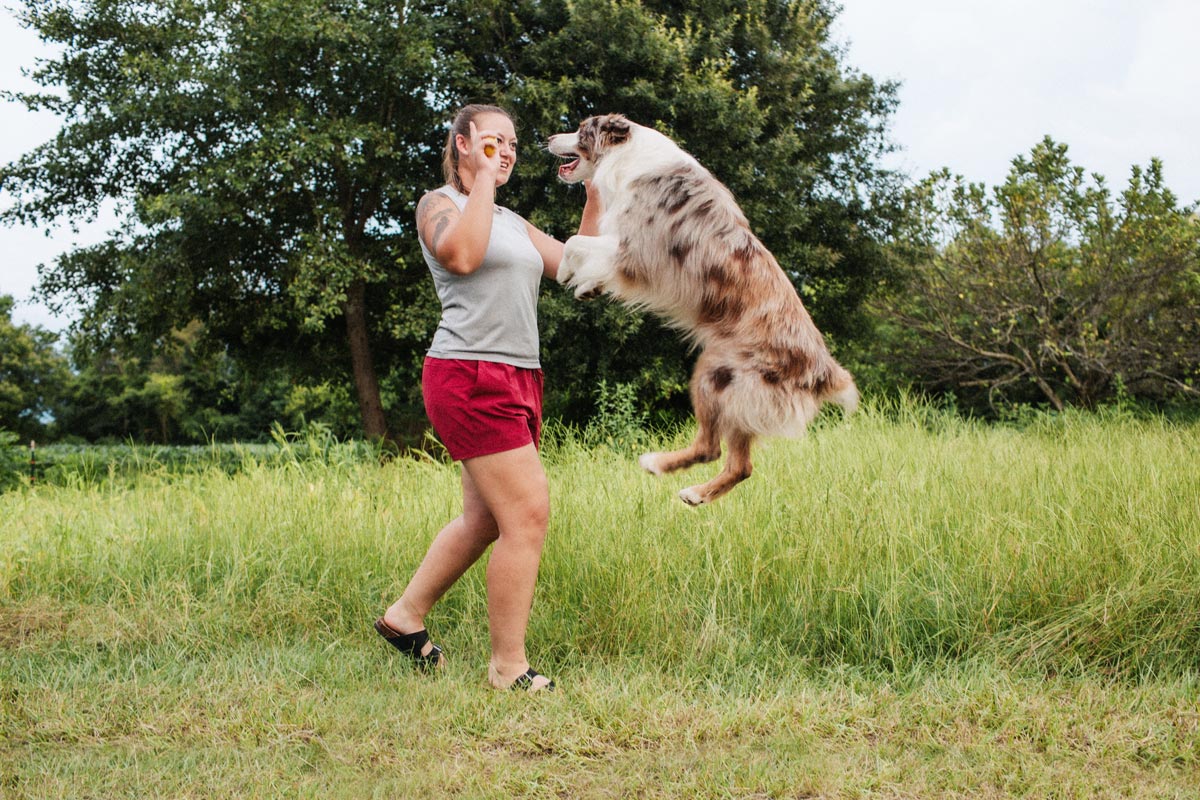
Since Jordyn has been training and breeding herding dogs for many years, I asked her to walk us through the steps of training one.
She mentioned that they train slightly differently than many because herding dogs are known to be pretty aloof to strangers. They want to make sure their dogs are socialized to protect the family from strangers, but if the person is a friend, once they let the dog know this person is OK, the dog should be friendly as well.
Typically, if you’re taking your dog to a stockyard trainer, they don’t even want to see it until it’s a year old, so keep this in mind when it comes to expectations of how soon your dog should be considered a “working dog.”
- At five weeks old, they do an “instinct test” with the puppies. They put them around livestock and watch their interactions. This helps them determine which homes will be best for which dog based on how they interact with various livestock.
- At six weeks old, they start crate training puppies. They want the dogs to know the crate is not a bad place to be, so they’ll feed them in the crate, give them treats and chew toys, etc. They’ll even make sure to put the puppies in the crate when they’re home to reduce separation anxiety. By the time the puppies are 10 weeks old, they’re sleeping 7-8 hours through the night, they’re happy to go in there, and it’s a positive relationship. The more the dog knows the crate is a good, safe space, the easier the transition will be.
- At seven weeks old, Jordyn has identified what kind of working dog each one will be based on how they interact with various livestock.
- For the next three weeks, they will expose the puppy to the livestock it will be working with to get used to its future job. For example, if a puppy has been paired up with a working farm, it will get three weeks of exposure to farm chores and livestock.
- The first year of the dog’s life is best to train the basic commands: stop, come, leave it, etc.
Expert Training Tips
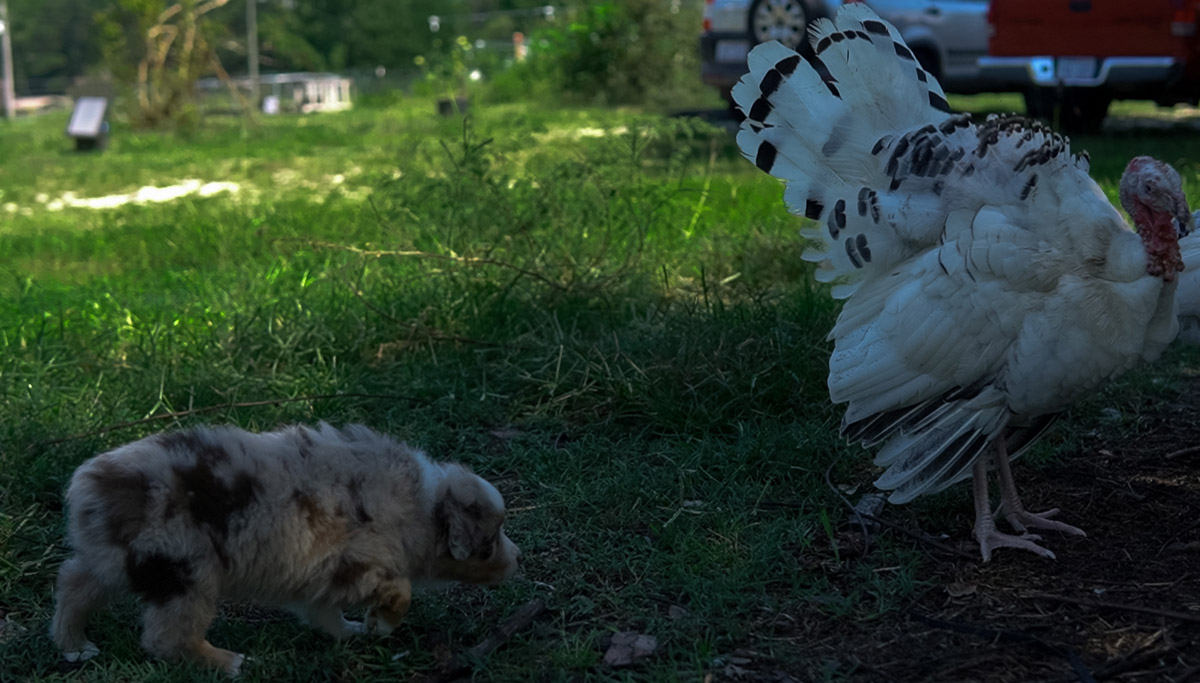
By about six months, Jordyn will allow her dogs to come out into the sheep’s yard with her with zero expectations. If the dog instinctively goes and herds the sheep, she’ll tell it good dog and move on.
However, she doesn’t bring her six-month-old dog with her to the cows. Her sheep aren’t going to be able to hurt her dogs, but one swift kick from a cow can end a dog’s life.
- If you have very specific needs for your herding dog, it’s great if you know someone with a working dog with similar needs whom your puppy can train alongside that dog. This may not always be possible, but puppies will learn very quickly when learning by example.
- From day one of getting your puppy, don’t allow anyone to put their hands inside the dog’s mouth. This trains the puppy that you’re OK to be used as a chew toy (or to move like livestock) and can lead to nipping or biting later on.
- Jordyn says the first thing she teaches a puppy is a solid recall, like “come.” If the dog listens to your command, it could save them, your livestock or anything else in danger.
- Her dogs get two chances to behave. If one is asked to come and doesn’t listen, she says it one more time. If the dog still doesn’t listen, it is put in the crate and gets a treat (for going into the kennel).
- By about six months, Jordyn will allow her dogs to come out into the sheep’s yard with her with zero expectations. If the dog instinctively goes and herds the sheep, she’ll tell it good dog and move on.
- It’s not recommended to introduce dogs to larger livestock too soon. Jordyn doesn’t bring her six-month-old dog in with her to the cows. While sheep won’t be able to hurt a dog too badly, one swift kick from a cow can end a dog’s life.
- She gives a reward when the dog listens, so the dog knows that listening and obeying are exciting and good.
- Punishment for a livestock herding dog is not getting to work with the livestock. If a dog is continually disobeying, remove them from the livestock.
- If a dog is continually not listening, Jordyn recommends taking it to a flat surface, such as a deck, rolling a treat across the deck and telling the dog to go get it. Once it gets the treat, say “come,” and the dog gets another treat for coming. Repeat this for a couple of days in a row, just ten-minute sessions, to reinforce that a dog gets rewarded when it obeys.
- Training is not a “one-and-done”. You will have to do tune-ups here and there.
Where to Find Jordyn Kelly

If you want to learn more or connect with Jordyn, you can find her on her website, Working Aussies Homestead. Be sure to check out her book, Herding on the Homestead: Start Where You Are. You can then follow their journey on Instagram, Facebook and YouTube.
Jordyn also recommends checking out Working Aussie Source. You can also audit at a herding trial. Check out AHBA (American Herding Breeds Association). They hold trials all over the country. This will help introduce you to all the herding breeds out there.
